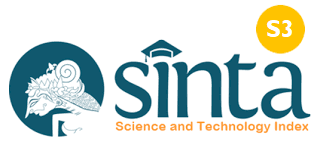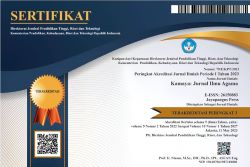Nilai-Nilai Pendidikan Agama Hindu Yang Terkandung Dalam Paribasa Bali Suguhan Pertunjukan Wayang Kulit Cenk Blonk
Keywords:
Hinduism Education Values, Paribasa Bali, Wayang Kulit Cenk BlonkAbstract
The rapid globalization has caused the Balinese language (BB) to become extinct. If BB goes extinct, Paribasa Bali (PB) will also disappear. In fact, PB has various functions, including forming noble characters. Various groups including the government took various efforts to preserve PB. Among the artists, one of them who preserved PB was the puppeteer I Wayan Nardayana in the Wayang Kulit Cenk Blonk (WKCB) performance. The problems discussed in this study are (1). What form of PB is shown in the WKCB performance? (2). What is the function of PB that is shown in the WKCB performance? (3) What Hindu religious education values are contained in PB that is shown in the WKCB performances? To analyse these problems, some theories are used. Popular culture theory is used to analyse the form of PB, semiotic theory is used to analyse PB functions and critical discourse theory is used to analyse the values of Hindu religious education contained in the PB presented by WKCB performances. The results of the study are as follows: 1). The PB forms in WKCB performance are (1) sesonggan; (2) Cecangkitan; (3) bladbadan; (4) Sesenggakan; (5) Peparikan; (6) Cecimpedan; (7) Sesawangan. 2) The PB functions in WKCB performance, namely: (1) The function of giving advice; (2) The function of conveying ridicule; (3) The function of humbling oneself; (4) The function of delivering praise; (5) Entertaining function; (6) aesthetic function; (7) Function of conveying bad luck. 2) The value of Hindu religious education contained in WKCB's PB performance, namely: (1) The value of self-education; (2) The value of education protects the weak; (3) The educational value of tradition; (4) The value of education makes satvika; (5) The educational value of the Tri Kona; (6) the value of awareness about appearance education; (7) The value of education improves the quality of human resources.
References
Kadjeng, I Nyoman, Dkk. (2005). Sarasamuscaya. Surabaya: Paramita.
Panitia Penyusun. (1993). Kamus Bali-Indonesia. Denpasar: Tanpa penerbit.
Putri, Arum Sutrisni Putri. (2019). “Apa Itu Peribahasa? Ciri-ciri, Fungsi, Jenis dan Contohnya”, dalam Kompas.com. Diakses 16 Juli 2020.
Simpen, I W, AB. (2009). Basita Parihasa. Denpasar: Upada Sastra.
Suasta, Putu. (2019). “Apresiasi dan Upaya Melestarikan Kembali Bahasa Bali”, dalam https://www.kompasiana.com/. Diakses 2 Januari 2020.
Suweta, I Made. (2018). “Perencanaan Bahasa Bali (Mengantisipasi Keterpurukan Bahasa, Aksara, dan Sastra Bali)”. dalam Jurnal Purwadita, Vol 2, No 2.
Tinggen, I Nengah. (1995). Aneka Rupa Paribasa Bali. Singaraja: Rhika Dewata.
Wiana, I Ketut. (1995). Yadnya dan Bhakti: Dari Sudut Pandang Hindu. Denpasar: Pustaka Manikgeni.
Zoetmulder, P.J. (1983). Kalangwan: Sastra Jawa Kuno Selayang Pandang. Jakarta: Djambatan.
Downloads
Published
How to Cite
Issue
Section
License
An author who publishes in the Kamaya : Jurnal Ilmu Agama agrees to the following terms:
- Author retains the copyright and grants the journal the right of first publication of the work simultaneously licensed under the Creative Commons Attribution-ShareAlike 4.0 License that allows others to share the work with an acknowledgement of the work's authorship and initial publication in this journal
- Author is able to enter into separate, additional contractual arrangements for the non-exclusive distribution of the journal's published version of the work (e.g., post it to an institutional repository or publish it in a book) with the acknowledgement of its initial publication in this journal.
- Author is permitted and encouraged to post his/her work online (e.g., in institutional repositories or on their website) prior to and during the submission process, as it can lead to productive exchanges, as well as earlier and greater citation of the published work (See The Effect of Open Access).
Read more about the Creative Commons Attribution-ShareAlike 4.0 Licence here: https://creativecommons.org/licenses/by-sa/4.0/.





